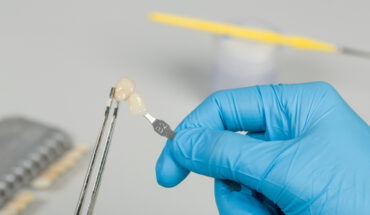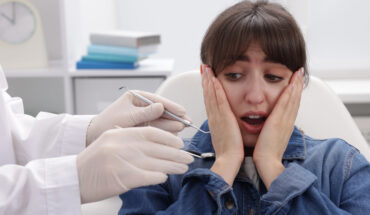
It is said that a man cuts his wisdom teeth the first time he bites off more than he can chew.
Wisdom and teeth. Forever intertwined. Generally thought by linguists to be called as such because they’re teeth that appear during adulthood, between the ages of 17 and 25.
Whether or not the person actually is wiser by the time they erupt is anyone’s guess. The irony of course is that it’s better to have the extraction when you’re young and healthy. Maybe Einstein’s annus mirabilis (1905), was the result of his wisdom teeth coming through the year before. Maybe that was the impetus for his four groundbreaking papers: the photoelectric effect; Brownian motion; special relativity, and the equivalence of mass and energy. It was what brought him to the notice of the academic world at the age of 26.
Mary Shelley famously penned her Gothic masterpiece Frankenstein when she was just 18 – had she dreamed of such a creature in both her grief and the getting of her wisdom teeth? “His yellow skin scarcely covered the work of muscles and arteries beneath; his hair was of a lustrous black, and flowing; his teeth of a pearly whiteness but these luxuriances only formed a more horrid contrast with his watery eyes, that seemed almost of the same color as the dun-white sockets in which they were set, his shriveled complexion and straight black lips.”
Good to see that even in 1818 there was much worth in a set of white choppers – including for an 8-foot-tall creation of hideousness. By its first stage production in London, 1823, Mary Bysshe Shelley had given birth to four children, buried three, and lost an unnamed baby through a severe miscarriage in which the bleeding only stopped when Percy had her sit on ice.
Such is the brooding and despairing cold comfort of Percy Bysshe Shelley…
The playbill listed the monster as “________” – blank. Simply, blank.
“This anonymous androdaemon,” one critic suggested.
Shelley remarked at the time that she herself had no name of her own.
“This nameless mode of naming the unnameable is rather good,” she said. Like the creature she pieced from cadavers attributed to Victor Frankenstein, her name was an assemblage. The name of her mother (feminist Mary Wollstonecraft) stitched to that of her father (philosopher William Godwin) grafted to her husband (poet Percy Bysshe Shelley). Mary Wollstonecraft Godwin Shelley was the sum of all these parts, and part of a world where you can birth and bury two children and write an acclaimed novel basically before your wisdom teeth show up.
This spectre of Dr Frankenstein’s monster fit the popular culture genre of its time because what emerged from young Mary Shelley’s romantic imagination reflected the growing unease with the science: the mid-19th century had the boundary between life and death challenged by physicians and scientists alike. Shelley’s novel casts Dr Frankenstein as the modern Prometheus – punished for reaching beyond the natural bounds of human life; stealing fire from the gods. While Frankenstein struggles with the scope and of his power over life and death, the monster – the very creation of the desires of the doctor – struggles to understand his very existence.
… and the fact that he’d just been born with wisdom teeth.
Monstrous.
Michelangelo was just 17 when he produced his first work, the Madonna of the Steps, a marble relief completed in 1491, with The Battle of the Centaurs finished not long after. His prodigious talent as an artist, poet, sculptor, architect and engineer proved him to be one of the greatest minds of the Renaissance, and one of the greatest artists of all time, ‘Il Divino’ exposed his deepest beliefs through teeth.
Bet you didn’t know that.
Among his works including The Damned Soul, Hercules and Antaeus, Grotesque Heads, The Crucifixion of St. Peter and the Sistine Chapel is a small, peculiar characteristic uniting his archetypes: a fifth incisor, or “mesiodens.”
Not something the artist created, but an uncommon anatomical feature.
Normally, with four above and four below, humans have eight incisors. This anomaly – hyperdontia – gives five top incisors. Three at the front; two directly behind.
Hyperdontia was known in the 16th and 17th centuries. There is mention of “dentes dittos bastardi sic dicta” – “the teeth bastards”. Known as “mesiodens” the young Michelangelo had a passion for anatomy. Mesiodens in Christianity represent violence, bestiality or lust and the eternal condemnation by the Church. A fifth incisor breaks harmony, bringing into question the classic idea that symmetry equals beauty.
Michelangelo took the trouble to change the teeth of his subjects and that become dangerously close to orthodoxy of the Reformation – ideas that would have certainly been newly discussed. This dental anomaly is the physical expression of a lack of spiritual grace.
And there’s not much grace in having your wisdom teeth out.
So how do you survive it? By doing what you’ve just been doing now – taking your mind somewhere else. Somewhere interesting. It’s something you can practice during the procedure, and in the days that follow as a useful pain management inclusion.
Because there is discomfort. This dental treatment has the worst online reputation. Removing wisdom teeth, as common as it is, is a surgical procedure. There is necessary aftercare to ensure there is no infection, and swelling minimised.
If there are prescribed antibiotics or painkillers, take them when you should; pain negatively affects our mental attitudes. Monitor for changes or responses you’re not comfortable with and contact your practitioner.
Swelling around the mouth, cheeks, eyes and sides of the face is the body’s reaction to tissue trauma and part of the repair cycle. It doesn’t become apparent until the first post-operative day and best managed with ice packs during the first thirty-six hours. After that, moist heat to the face is more beneficial.
As bizarre as it is, you can brush your teeth the night of surgery but there can be no rinsing at all, until 24-hours after surgery. Then it’s best for the healing process to rinse with a cup of warm water and a teaspoon of salt after eating, and before bed.
After any anaesthetic or sedation, liquids are mandatory and with the accompanying jaw and gum discomfort, there’ll be nothing but that for the first few days at least. And as tempting as it may seem, don’t use a straw – the sucking motion can dislodge the healing blood clot and cause bleeding. Have fluids plentifully and regularly to prevent dehydration. Soft foods can happen after the numbness wears off.
The only survivor’s testimonial worth knowing is your own. It’s certainly what American philosopher Eric Hoffer meant when he said, “The wisdom of others remains dull until it is writ with our own blood. We are essentially apart from the world; it bursts into our consciousness only when it sinks its teeth and nails into us.”
If you think anyone other than your dentist has any real influence on oral care, it was the late great Frank Zappa who said, “I wrote a song about dental floss but did anyone’s teeth get cleaner?”




